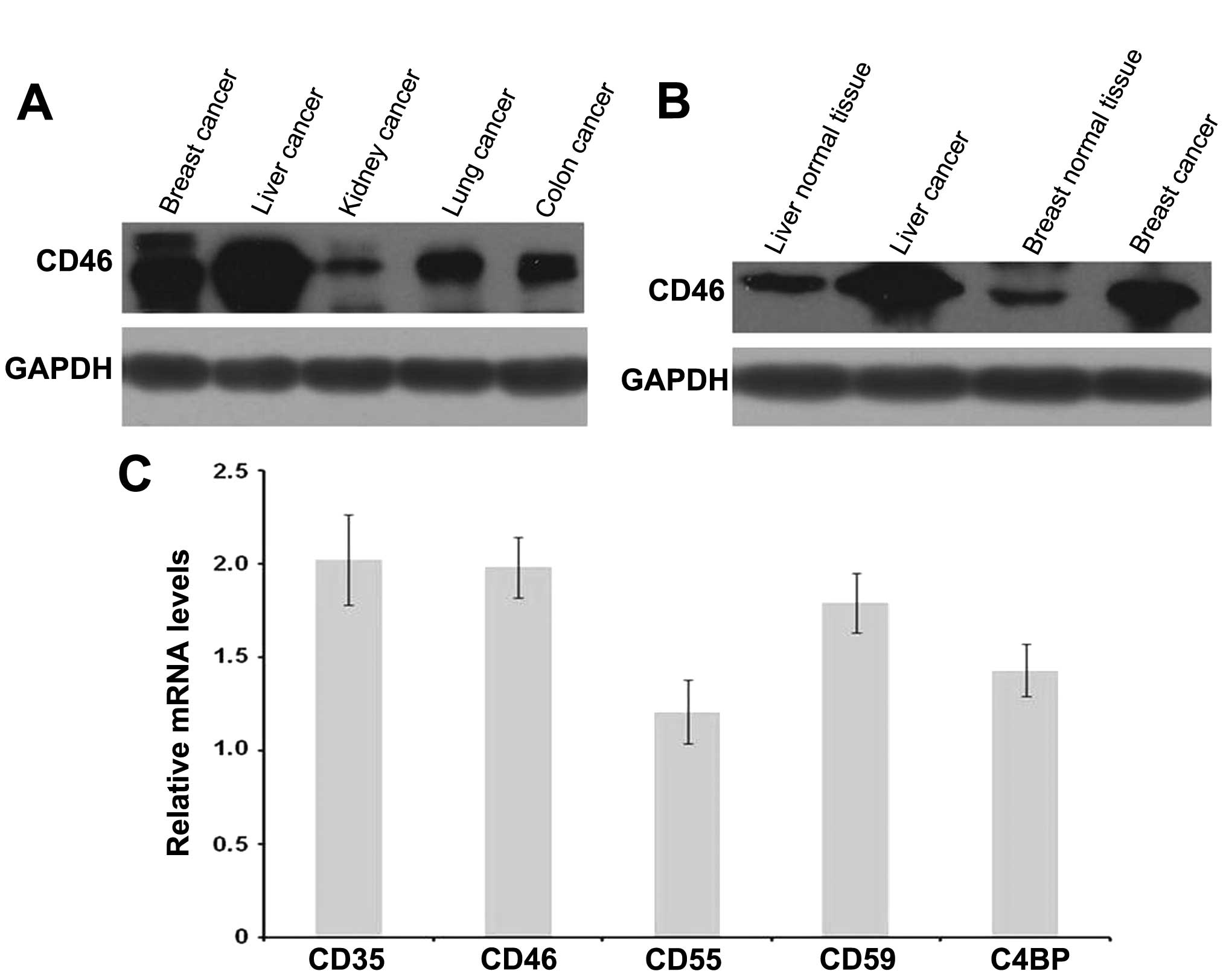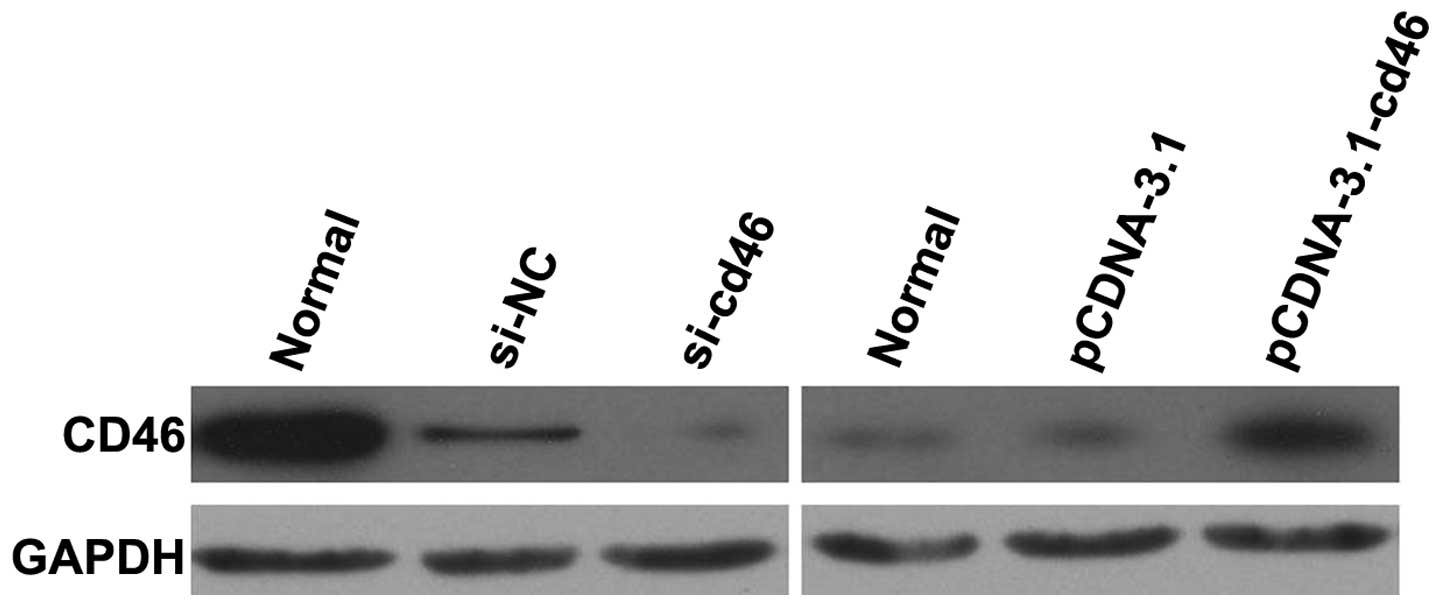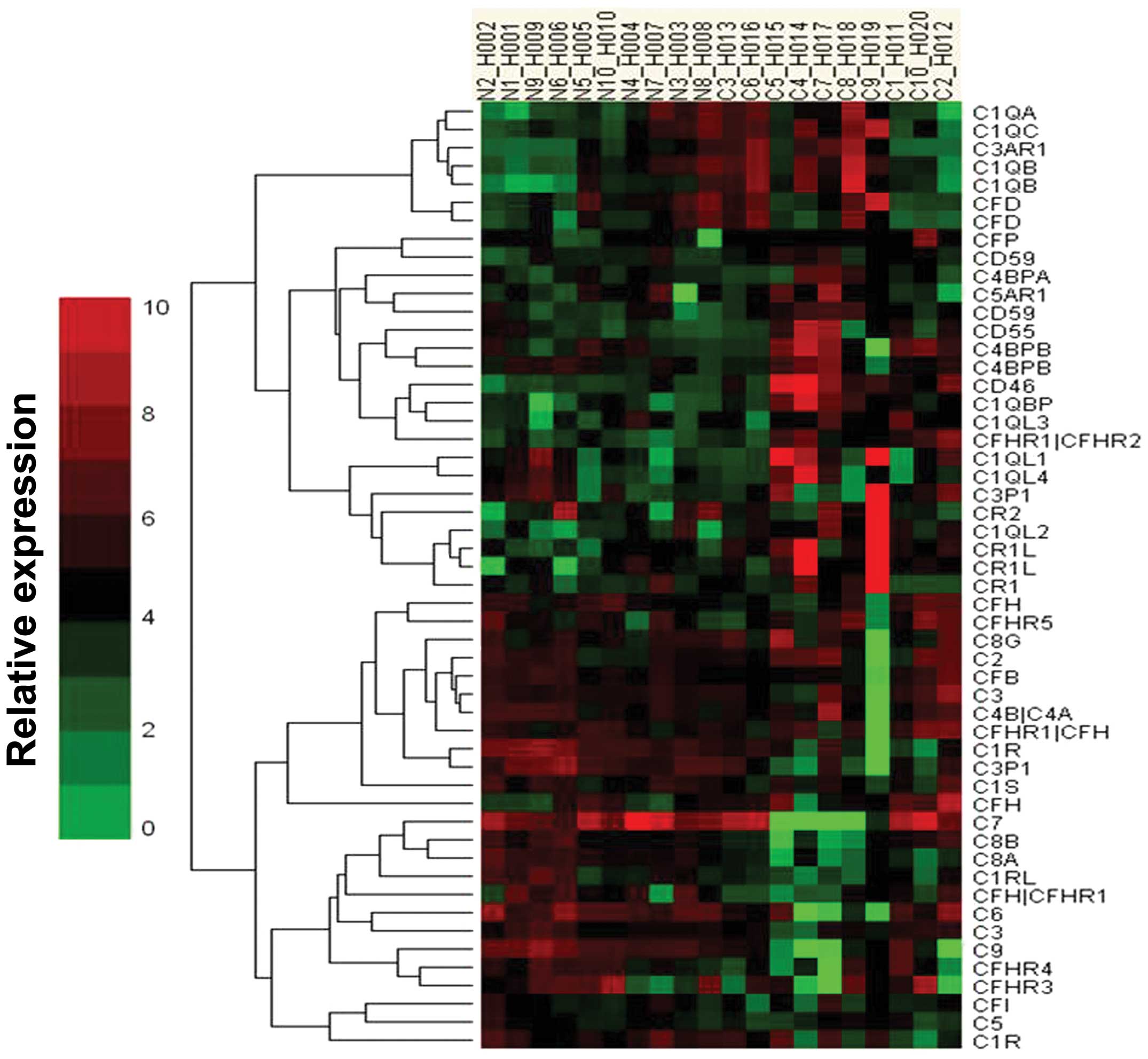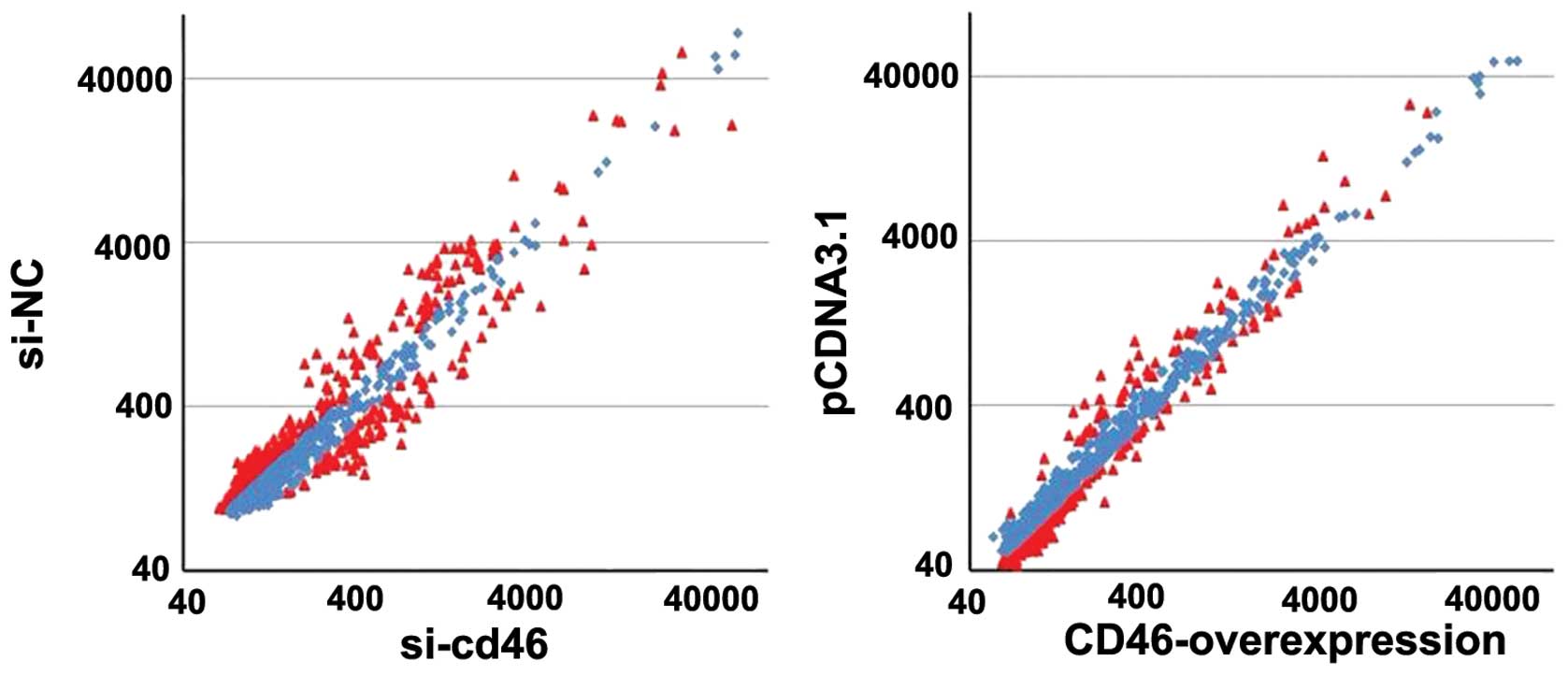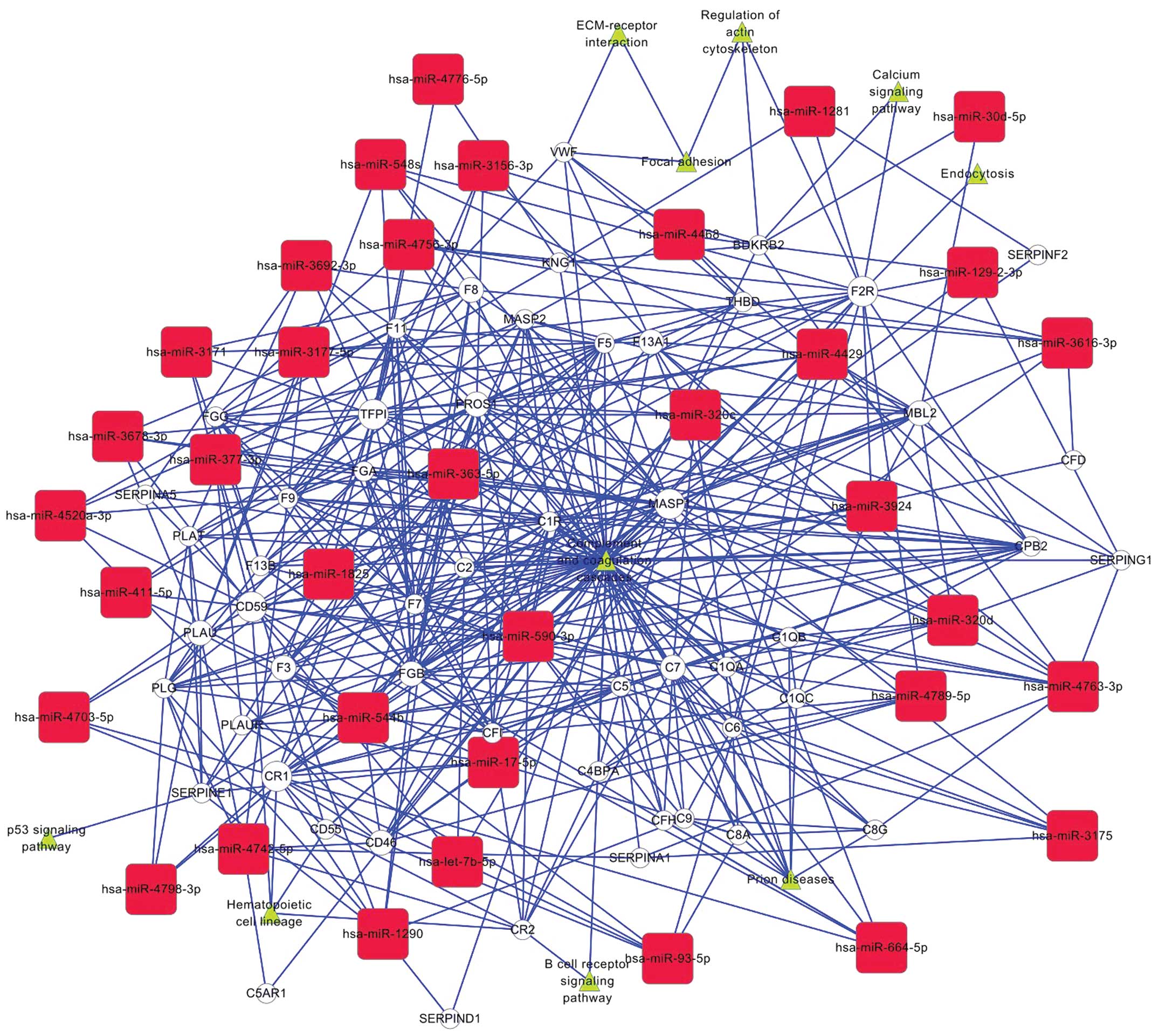|
1
|
Duffy A and Greten T: Developing better
treatments in hepatocellular carcinoma. Expert Rev Gastroenterol
Hepatol. 4:551–560. 2010. View Article : Google Scholar : PubMed/NCBI
|
|
2
|
Lo CM, Ngan H, Tso WK, et al: Randomized
controlled trial of transarterial lipiodol chemoembolization for
unresectable hepatocellular carcinoma. Hepatology. 35:1164–1171.
2002. View Article : Google Scholar : PubMed/NCBI
|
|
3
|
Holt DS, Botto M, Bygrave AE, Hanna SM,
Walport MJ and Morgan BP: Targeted deletion of the CD59 gene causes
spontaneous intravascular hemolysis and hemoglobinuria. Blood.
98:442–449. 2001. View Article : Google Scholar : PubMed/NCBI
|
|
4
|
Halperin JA, Taratuska A and
Nicholson-Weller A: Terminal complement complex C5b-9 stimulates
mitogenesis in 3T3 cells. J Clin Invest. 91:1974–1978. 1993.
View Article : Google Scholar : PubMed/NCBI
|
|
5
|
Hadders MA, Bubeck D, Roversi P, et al:
Assembly and regulation of the membrane attack complex based on
structures of C5b6 and sC5b9. Cell Rep. 1:200–207. 2012. View Article : Google Scholar : PubMed/NCBI
|
|
6
|
Brodbeck WG, Mold C, Atkinson JP and Medof
ME: Cooperation between decay-accelerating factor and in protecting
cells from autologous complement attack. J Immunol. 165:3999–4006.
2000. View Article : Google Scholar : PubMed/NCBI
|
|
7
|
Kemper C, Chan AC, Green JM, Brett KA,
Murphy KM and Atkinson JP: Activation of human CD4+cells
with CD3 and CD46 induces a T-regulatory cell 1 phenotype. Nature.
421:388–392. 2003.PubMed/NCBI
|
|
8
|
Matsumura N, Tagami H, Hotta T, Takemura
S, Yoshikawa T and Kondo M: Serum complement profile and its
clinical significance in patients with hepatocellular carcinoma and
liver cirrhosis. Nihon Shokakibyo Gakkai Zasshi. 78:1753–1759.
1981.(In Japanese).
|
|
9
|
Baranyi L, Baranji K, Takizawa H, Okada N
and Okada H: Cell-surface bound complement regulatory activity is
necessary for the in vivo survival of KDH-8 rat hepatoma.
Immunology. 82:522–528. 1994.PubMed/NCBI
|
|
10
|
Kinugasa N, Higashi T, Nouso K, et al:
Expression of membrane cofactor protein (MCP, CD46) in human liver
diseases. Br J Cancer. 80:1820–1825. 1999. View Article : Google Scholar : PubMed/NCBI
|
|
11
|
Spiller OB, Criado-García O, Rodríguez De
Córdoba S and Morgan BP: Cytokine-mediated up-regulation of CD55
and CD59 protects human hepatoma cells from complement attack. Clin
Exp Immunol. 121:234–241. 2000. View Article : Google Scholar : PubMed/NCBI
|
|
12
|
Law PT and Wong N: Emerging roles of
microRNA in the intracellular signaling networks of hepatocellular
carcinoma. J Gastroenterol Hepatol. 26:437–449. 2011. View Article : Google Scholar : PubMed/NCBI
|
|
13
|
Negrini M, Gramantieri L, Sabbioni S and
Croce CM: microRNA involvement in hepatocellular carcinoma.
Anticancer Agents Med Chem. 11:500–521. 2011. View Article : Google Scholar
|
|
14
|
Ladeiro Y, Couchy G, Balabaud C, et al:
MicroRNA profiling in hepatocellular tumors is associated with
clinical features and oncogene/tumor suppressor gene mutations.
Hepatology. 47:1955–1963. 2008. View Article : Google Scholar : PubMed/NCBI
|
|
15
|
Ariizumi S, Katagiri S, Katsuragawa H,
Kotera Y and Yamamoto M: Sectionectomy is suitable for patients
with T2 hepatocellular carcinoma according to the modified
International Union against Cancer TNM Classification. Dig Surg.
24:342–348. 2007. View Article : Google Scholar
|
|
16
|
Lu ZJ, Liu SY, Yao YQ, et al: The effect
of miR-7 on behavior and global protein expression in glioma cell
lines. Electrophoresis. 32:3612–3620. 2011. View Article : Google Scholar : PubMed/NCBI
|
|
17
|
Gao X, Gulari E and Zhou X: In situ
synthesis of oligonucleotide microarrays. Biopolymers. 73:579–596.
2004. View Article : Google Scholar : PubMed/NCBI
|
|
18
|
Pan W: A comparative review of statistical
methods for discovering differentially expressed genes in
replicated microarray experiments. Bioinformatics. 18:546–554.
2002. View Article : Google Scholar
|
|
19
|
Treon SP, Mitsiades C, Mitsiades N, et al:
Tumor cell expression of CD59 is associated with resistance to CD20
serotherapy in patients with B-cell malignancies. J Immunother.
24:263–271. 2001. View Article : Google Scholar
|
|
20
|
Nakagawa M, Mizuno M, Kawada M, et al:
Polymorphic expression of decay-accelerating factor in human
colorectal cancer. J Gastroenterol Hepatol. 16:184–189. 2001.
View Article : Google Scholar : PubMed/NCBI
|
|
21
|
Simpson KL, Jones A, Norman S and Holmes
CH: Expression of the complement regulatory proteins decay
accelerating factor (DAF, CD55), membrane cofactor protein (MCP,
CD46) and CD59 in the normal human uterine cervix and in
premalignant and malignant cervical disease. Am J Pathol.
151:1455–1467. 1997.
|
|
22
|
Junnikkala S, Jokiranta TS, Friese MA,
Jarva H, Zipfel PF and Meri S: Exceptional resistance of human H2
glioblastoma cells to complement-mediated killing by expression and
utilization of factor H and factor H-like protein 1. J Immunol.
164:6075–6081. 2000. View Article : Google Scholar : PubMed/NCBI
|
|
23
|
Weichenthal M, Siemann U, Neuber K and
Breitbart EW: Expression of complement regulatory proteins in
primary and metastatic malignant melanoma. J Cutan Pathol.
26:217–221. 1999. View Article : Google Scholar : PubMed/NCBI
|
|
24
|
Kojima A, Iwata K, Seya T, et al: Membrane
cofactor protein (CD46) protects cells predominantly from
alternative complement pathway-mediated C3-fragment deposition and
cytolysis. J Immunol. 151:1519–1527. 1993.
|
|
25
|
Zell S, Geis N, Rutz R, Schultz S, Giese T
and Kirschfink M: Down-regulation of CD55 and CD46 expression by
anti-sense phosphorothioate oligonucleotides (S-ODNs) sensitizes
tumour cells to complement attack. Clin Exp Immunol. 150:576–584.
2007. View Article : Google Scholar : PubMed/NCBI
|
|
26
|
Janssen EA, Slewa A, Gudlaugsson E, et al:
Biologic profiling of lymph node negative breast cancers by means
of microRNA expression. Mod Pathol. 23:1567–1576. 2010. View Article : Google Scholar : PubMed/NCBI
|
|
27
|
Herranz H and Cohen SM: MicroRNAs and gene
regulatory networks: managing the impact of noise in biological
systems. Genes Dev. 24:1339–1344. 2010. View Article : Google Scholar : PubMed/NCBI
|
|
28
|
Reinhart BJ, Slack FJ, Basson M, et al:
The 21-nucleotide let-7 RNA regulates developmental timing in
Caenorhabditis elegans. Nature. 403:901–906. 2000.
View Article : Google Scholar : PubMed/NCBI
|
|
29
|
Sempere LF, Christensen M, Silahtaroglu A,
et al: Altered microRNA expression confined to specific epithelial
cell subpopulations in breast cancer. Cancer Res. 67:11612–11620.
2007. View Article : Google Scholar : PubMed/NCBI
|
|
30
|
Lan FF, Wang H, Chen YC, et al:
Hsa-let-7g inhibits proliferation of hepatocellular
carcinoma cells by downregulation of c-Myc and upregulation
of p16INK4A. Int J Cancer. 128:319–331. 2011.
View Article : Google Scholar
|
|
31
|
Connolly E, Melegari M, Landgraf P, et al:
Elevated expression of the miR-17-92 polycistron and miR-21 in
hepadnavirus-associated hepatocellular carcinoma contributes to the
malignant phenotype. Am J Pathol. 173:856–864. 2008. View Article : Google Scholar
|
|
32
|
Yang F, Yin Y, Wang F, et al: miR-17-5p
promotes migration of human hepatocellular carcinoma cells through
the p38 mitogen-activated protein kinase-heat shock protein 27
pathway. Hepatology. 51:1614–1623. 2010. View Article : Google Scholar : PubMed/NCBI
|
|
33
|
Zheng J, Dong P, Gao S, Wang N and Yu F:
High expression of serum miR-17-5p associated with poor prognosis
in patients with hepatocellular carcinoma. Hepatogastroenterology.
60:549–552. 2012.PubMed/NCBI
|
|
34
|
Chen L, Jiang M, Yuan W and Tang H:
miR-17-5p as a novel prognostic marker for hepatocellular
carcinoma. J Invest Surg. 25:156–161. 2012. View Article : Google Scholar : PubMed/NCBI
|















